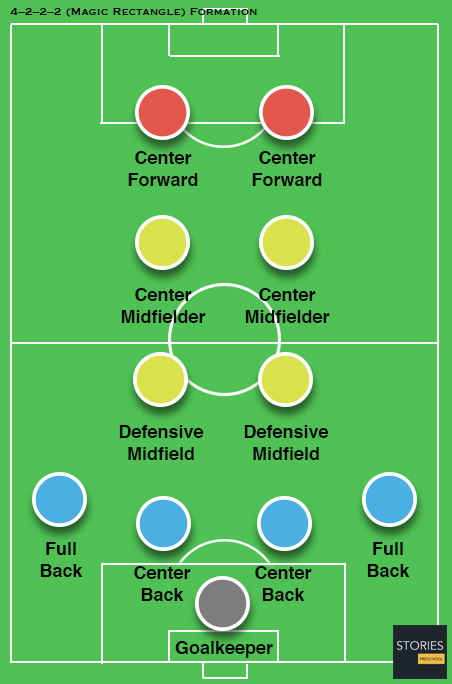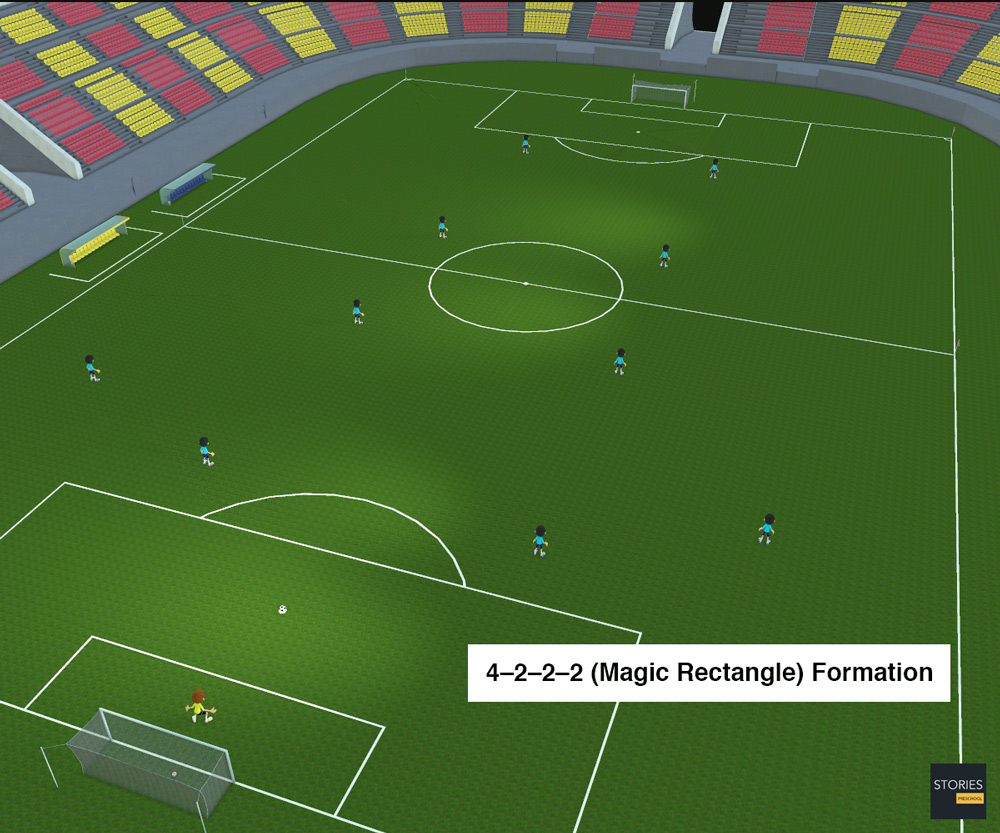Soccer

4–2–2–2 (Magic Rectangle) Formation
Often referred to as the "Magic Rectangle" or "Magic Square", this formation was used by France under Michel Hidalgo at the 1982 FIFA World Cup and the UEFA Euro 1984, and later by Henri Michel at the 1986 FIFA World Cup and a whole generation, for Brazil with Telê Santana, Carlos Alberto Parreira and Vanderlei Luxemburgo, by Arturo Salah and Manuel Pellegrini in Chile and Francisco Maturana in Colombia. The "Magic Rectangle" is formed by combining two box-to-box midfielders with two deep-lying ("hanging") forwards across the midfield. This provides a balance in the distribution of possible moves and adds a dynamic quality to midfield play.

This formation was used by former Real Madrid manager Manuel Pellegrini and met with considerable praise. Pellegrini also used this formation whilst at Villarreal and Málaga. The formation is closely related to a 4–2–4 previously used by Fernando Riera, Pellegrini's mentor, and that can be traced back to Chile in 1962 who (may have) adopted it from the Frenchman Albert Batteux at the Stade de Reims of 50s.
This formation had been previously used at Real Madrid by Vanderlei Luxemburgo during his failed stint at the club during the latter part of the 2004–05 season and throughout the 2005–06 season. This formation has been described as being "deeply flawed" and "suicidal". Luxemburgo is not the only one to use this although it had been used earlier by Brazil in the early 1980s. At first, Telê Santana, then Carlos Alberto Parreira and Vanderlei Luxemburgo proposed basing the "Magic Rectangle" on the work of the wing backs. The rectangle becomes a 3–4–3 on the attack because one of the wing backs moves downfield.

In another sense, the Colombian 4–2–2–2 is closely related to the 4–4–2 diamond of Brazil, style different from the French-Chilean trend and is based on the complementation of a box-to box with 10 classic. Emphasizes the triangulation, but especially in the surprise of attack. The 4–2–2–2 formation consists of the standard defensive four (right back, two centre backs, and left back), with two centre midfielders, two support strikers, and two out and out strikers. Similar to the 4–6–0, the formation requires a particularly alert and mobile front four to work successfully. The formation has also been used on occasion by the Brazilian national team, notably in the 1998 FIFA World Cup final.
SPORTS

RESOURCES
This article uses material from the Wikipedia articles "Association football" and "Formation (Association football)", which is released under the Creative Commons Attribution-Share-Alike License 3.0.
© Stories Preschool. All Rights Reserved.












